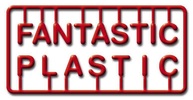Atlas/Saturn Interplanetary Space Vehicle (1956)
About the Design
With no relation to the actual "Atlas" booster that would soon send America's Mercury astronauts into space, this pre-Sputnik design was foresighted enough to abandon the impractical one-stage V-2-like "rocketship" concept popular earlier in the decade in favor of a more scientifically feasible multi-stage system. Buildable as either a three- or four-stage rocket (The more aesthetic three-stage version is shown here), Hawk's "Atlas" employed multiple "cluster rockets" similar to those the Soviets were, coincidentally, actually developing at the time.
Two odd design features that immediately call attention to themselves: 1) The "Atlas" looks awfully big in proportion to the tiny satellite it's designed to carry, and 2) The fins on the second and third stages would be wholly useless in the thin upper and non-atmospheres where they are intended to operate. No doubt the latter feature is simply a bow to the artistic sensibilities of the era. |
About the Kit
In 1956, Hawk released this kit under the names "Atlas ICBM" and "Saturn ICBM." The kits and even their box art were identical.
In 1967 the "Saturn" version was re-released with the old 1950's box art. A final 1969 release found the "Saturn" designated an "Interplanetary Space Vehicle" and boasting new box art featuring the a three-stage version of the craft (as in the model above) rocketing into orbit. The kit displayed here is a refurbished 1969 edition. |


